By combining your customer journey with revenue and out-of-the-box attribution, Gauges helps you spot the key conversion channels, touchpoints, and also the optimal paths to conversion.
With advanced conversion analytics features, this web analytics tool helps you learn the “why” behind more conversions (and engagement and retention).
Note that you can set a maximum of 15 goals per website (or app) you want to track with it. Which means if you have a large website with a deep, multi-step sales funnel, you may not be able to use this tool. That said, if you have a small website and you want to own your data, you could consider it.
Unlike other web analytics tools that need you to mine the data, Quantum Metric offers to do it for you. For instance, Quantum Metric will itself spot and show you the blind spots in your funnel where it believes you’re losing conversions. Not just that, every optimization opportunity Quantum Metric highlights comes with a reported impact, so you can easily prioritize.
You can also retrieve historical data about events that you never even set up (but Heap tracked anyway). This can come in handy when you want to hypothesize testing elements that you never even analyzed as Heap would still know how your users interacted with them in the past. Also, with its powerful identity resolution, Heap helps you analyze all your key touchpoints across all the different devices and platforms that your users use to access your product or service, spanning all your campaigns, right from acquisition to conversion.
Not just that, Clicky Analytics also offers heatmaps. In addition to heatmaps for all your website’s pages, you can also use it to analyze your experiments. So, for example, if you run an A/B test, you can see how your users seeing version A are interacting with your website and compare your findings with those seeing version B. Regardless of the tool you picked, you can easily import your goals, run custom reporting and have test data sent to your tool for advanced analytics.
This web analytics solution also gives you an edge with its cross-device customer journey tracking capabilities. It can combine your web and app visits across different devices and give you a holistic picture of your users’ engagement with your business. This web analytics tool gives you a “360-degree view of your entire sales funnel.” Just like Decibel Insights, Clicktale empowers you with both quantitative and qualitative data answering both the “what” and “why” questions across your sales funnel.
This web analytics solution is unlike any other on this list. With its predictive analytics capabilities, it tells you how “your website visitors” can “become customers.”
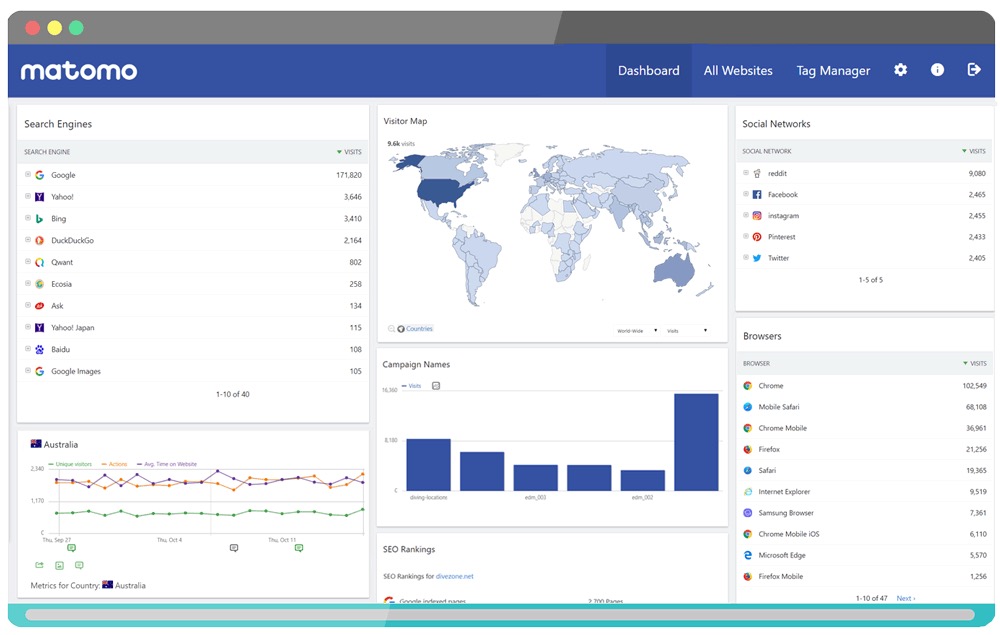
Source
This powerful solution doubles up as a sort of a CRM. So once you upload your email list to it, it will fetch details about your contacts’ companies, social profiles and so on. And when your leads are on your website, you can engage them in real-time with Live chat (a free, GoSquared-supported chat tool) and close deals faster.
Here’s Convert’s CEO, Dennis van der Heijden, doing a quick demonstration of how easy it is to set up 80+ one tag integrations, including with your analytics tool of choice. This web analytics solution offers a free plan that supports 1,000 monthly tracked users. Its paid plans start at and unlock more advanced features and higher monthly usage limits.
You can use Open Web Analytics to track data about your visitors (source, loyalty, location, actions, etc.), the details about your transactions (revenue, visits and days to purchase, and more), the performance of your content (your top pages and also the top entry and exit pages) and your overall conversion funnels. You also get heatmap and clickstream data. Setting up all the right goals and mapping your entire funnel, ensuring that they collect the data they’re meant to, and verifying with test views if your filters give error-free numbers, form the absolute essentials. So think about the questions you need your web analytics data to answer. And set up your tool properly to ensure it collects and reports accurately.
When you set it up right, it can show you your most valuable traffic sources (those that report good conversion rates), key pages that assist conversions, your buying users’ behavior or their path to conversions (and all the actions they perform along it), the spots where most of your non-converting users drop off (the leaks), and much more.
This web analytics tool gives you both qualitative and quantitative data that you can use to hypothesize winning experiments faster. … but how you set it up.
Mixpanel shows you your users’ actions through their sales journey and helps you uncover the paths that lead to sales. You can use this data to compare the behavior (and paths and actions) of your converting (or the highest-converting) segments with those converting poorly. Statcounter is for small businesses that don’t have web data analysts or optimizers in-house. Built for non-tech savvy users, this web analytics tool is “just dead easy and dead clear and dead simple to use,” as a user puts it.
With behavior analytics powered by machine intelligence, Quantum Metric helps you “find needles in big data haystack” and fast-tracks your optimization process.
This web analytics solution is a lot like Google Analytics, sans data limits. Just like Google Analytics, you can use it to get deep insights into your website’s visitors, their demographics, sources, and technology. You can also set up multi-step goals or funnels, like you would in Google Analytics, to diagnose the “leaks” on your website.
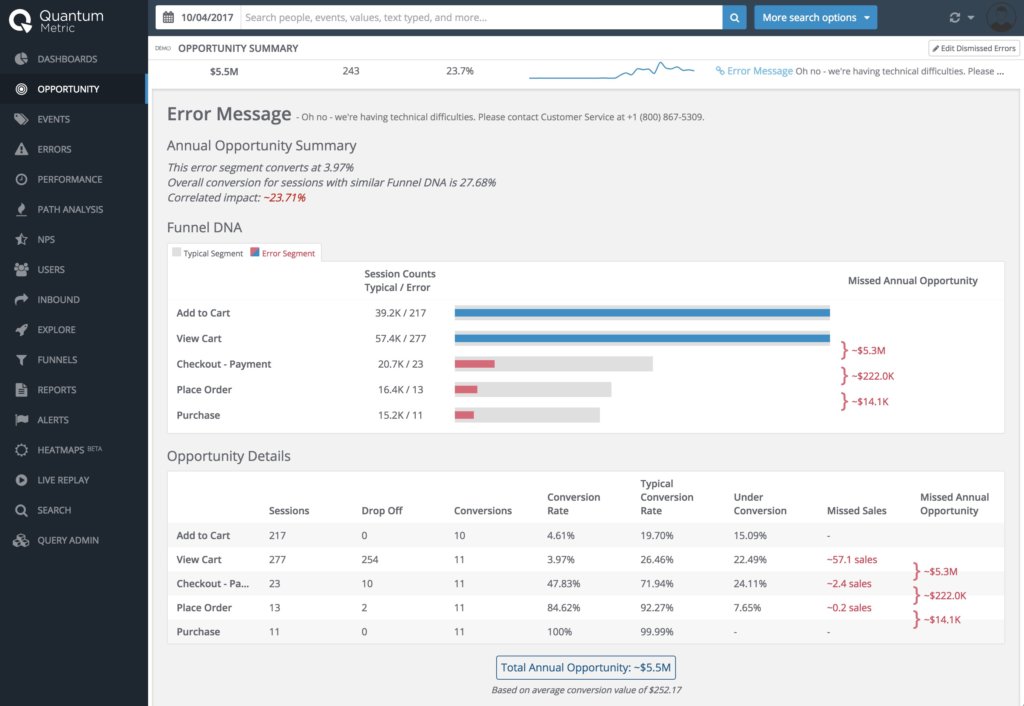
Source
This web analytics tool comes with both free and paid plans. Its premium plans start at .99/year for 1,000,000 monthly page views.
This web analytics solution gives you data that will answer all your business questions. From identifying the channels that drive the most sign-ups to the content that gets the highest viewership and the impact of live chat on conversions, Woopra stitches together your users’ sales, marketing, and support interactions to give you deeper insights into what they do on your website or inside your app. This web analytics tool gives you insight into every single touchpoint in your sales funnel and helps you discover ways to drive more conversions and boost retention. It can map the complete journey of each of your visitors even when it spans across different platforms and devices. Woopra’s free plan supports 500k actions. And its paid plans start at 9/month and unlock higher usage bandwidth and features like behavioral segmentation, triggers, etc.
This web analytics solution comes with powerful attribution analytics. So you don’t just get powerful insights into your website’s traffic, sources and behavior at the different touchpoints in your funnel, but you also get to attribute the different touches from the different channels and measure each of them’s monetary value. Amplitude Analytics shines at capturing user behavior actions. Its behavioral analysis can help you identify the real personas from your aggregate masses — segmented by their actions — showing you the ones who have the potential to be your power users (those that bring the maximum revenue). It also helps you understand the intent and motivations behind the many actions your users take, so you manage their expectations better and create data-driven product experiences that drive conversions and retention.
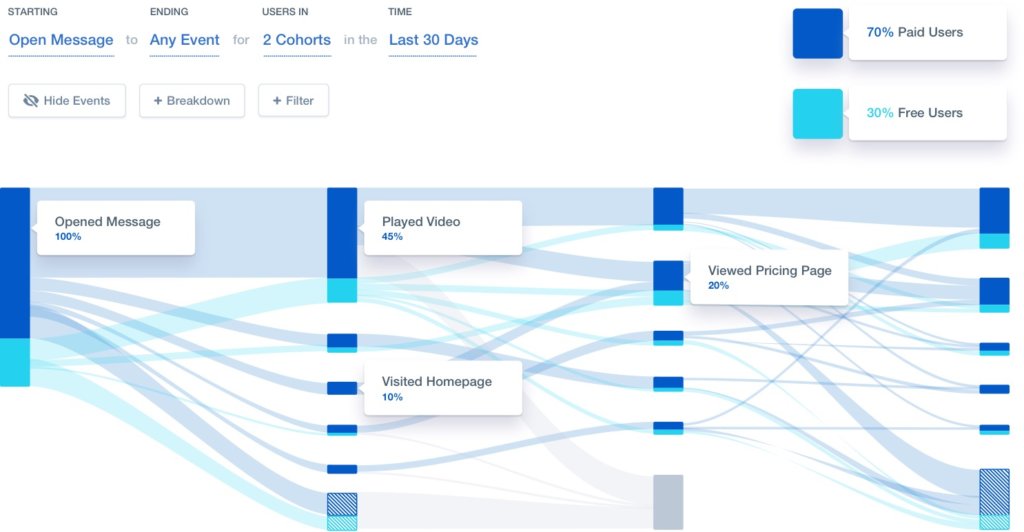
Source
This one is an open source web analytics solution that helps you understand how your users interact with your website or application.
Unlike most of the web analytics tools that need you to set up extensive event tracking for actions such as clicks or downloads on your website (or inside your app), to collect data, this tool does its work automagically.
This web analytics tool is engineered for privacy, comes with “100+ features” and a “0 learning curve.” GoSquared offers features like Timeline Annotations (hit by a Google penalty or got a viral post, mark it!), Smart Predictions (that help you forecast your expected traffic volumes using historical data), and Organisations + ISPs (for identifying the companies your visitors are from) among others. By powering its web analytics solution with a potent suite of SEO tools, the makers of GoingUp! aim to reveal a “complete picture” of your website. If the search channel is an important part of your conversion funnel (it almost always is!), GoingUp! is definitely worth trying.
Clicktale’s features like heatmaps, session replays, and advanced form and funnel analytics come in handy for speeding up decision-making and running a high-velocity experimentation program. They help you decipher things like why a certain version in a split test outdid the other.
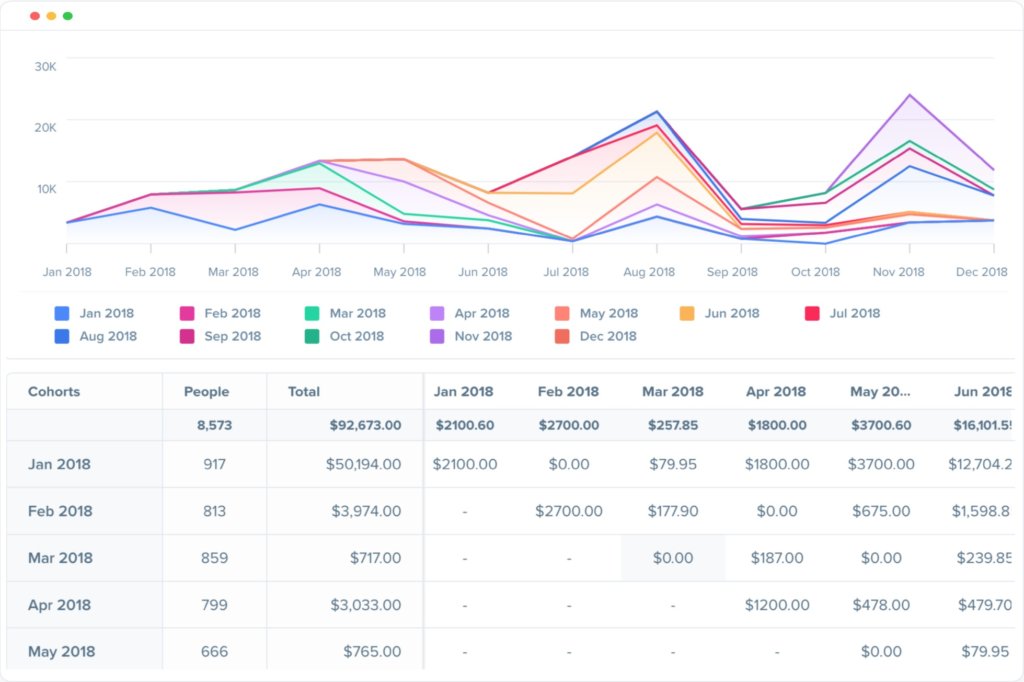
Source
Not just that, unless you use an A/B testing tool like Convert Experiences that integrates seamlessly with most web analytics tools, you also need to ensure that your analytics tool and experiments tool can “talk” to each other and correctly report views, conversions, and other metrics. Otherwise, data discrepancies could derail your entire experimentation program.
If you’re looking for a Google Analytics alternative or another tool to use alongside it, you should find a suitable option on this list. This web analytics tool helps you reclaim the 15 percent of revenue that most businesses typically lose to lost conversions.
Not just that, you can also drill down your Google Analytics data at various levels (audience, device, channel, source, campaign, etc., for example) for more targeted insights.
The basic version of Google Analytics is free while the premium version (Google Analytics 360) starts at 0k/year.
Geared somewhat more toward post-acquisition optimization, this tool comes in both free and paid plans. Its free plan too can be a great starting point for unlocking behavioral insights that most other web analytics tools like Google Analytics can’t measure or report intuitively. Also, Webtrekk only collects your data but doesn’t use it, so only you own it in the true sense.
Also, when you just can’t have Google access your website’s analytics data — or that of your privacy-first European client’s — Matomo Analytics is your answer. With its on-premise version, this web analytics tool lets you store, manage, and delete your web analytics data as you deem fit. You can have your servers anywhere in the world. This web analytics tool gives “you and your business 100% data ownership and user privacy protection.”
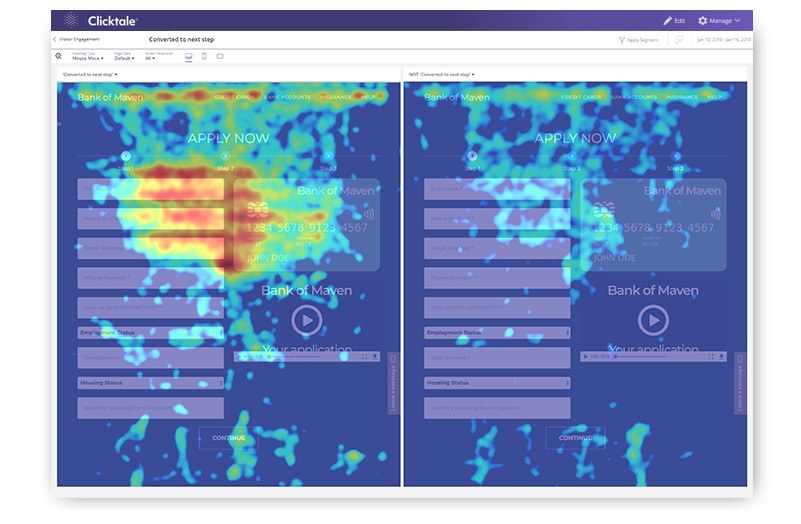
Source
Also, just like Mixpanel, Woopra (with its integrations) enables you to respond to your users’ behavior with relevant messaging in real-time, helping you influence their decisions. This web analytics tool lets you go beyond vanity metrics like page views and clicks. It gives you a “360º-view of behaviors across the customer journey.”
Packed with session replays, clickmaps, heatmaps, scrollmaps, funnel and form analytics, and more, this web analytics solution helps you measure all that’s important for you to optimize your user’s experience.
Your turn now…
Matomo Analytics comes powered with heatmaps, session recordings, form analytics, and even A/B testing — things that Google Analytics doesn’t offer (even in its premium version). So with this web analytics tool, you can gather both quantitative and qualitative data to power your hypotheses. Features like keyword research, rank tracking, and search terms analysis, coupled with funnel-specific functionalities such as goal-setting and event-tracking make this solution a good option for optimizing your search traffic for more conversions.
GoSquared offers both free and paid plans. Its /month premium plan unlocks all its features for 100,000 monthly pages. Plans go up from here for higher traffic volumes.
Click Analytics has always been known to be the most intuitive web analytics platform. With a low learning curve, this is one analytics tool that you can start using right away (without going through any academy with 40+ hour content!).
Some web analytics tools excel at giving you a 360-degree analysis of your website’s performance (think: the ubiquitous Google Analytics), while others give you absolute control and ownership of your data (yeah, unlike Google Analytics!). Here goes…
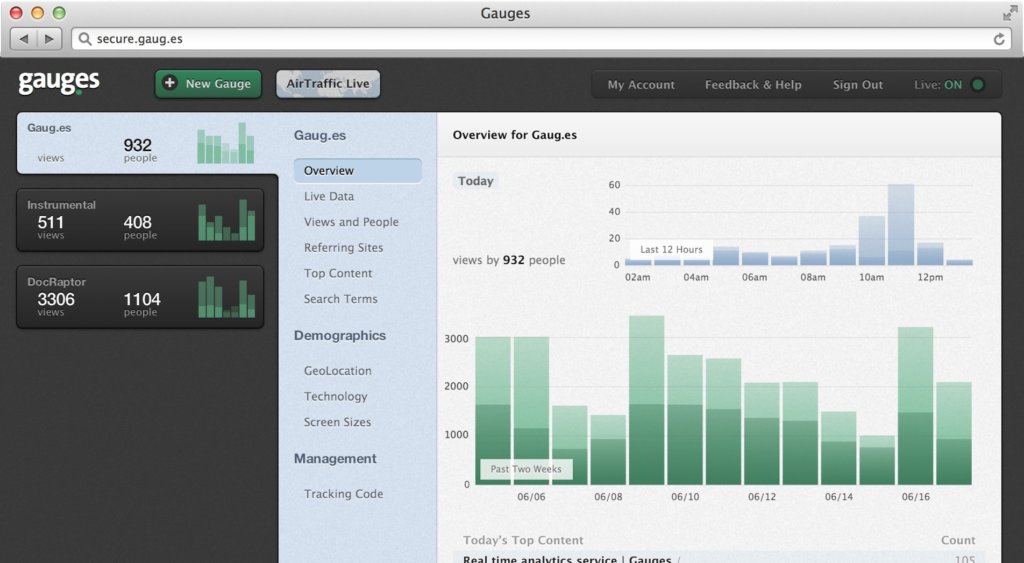
Source
And like Google Analytics, Yandex Metrica is a free web analytics solution, and it will process your data anonymously for powering its search-based products and services.
If you watch the demo, it will feel a lot like Google Analytics, especially from its earlier days — but with a cleaner and more intuitive dashboard with all the key metrics available neatly stacked in a sidebar. But you don’t have to write it off just because it simplifies web analytics. Try it and it might surprise you with how easily it tracks your users’ behavior and engagement with your website with its Visitor Paths feature. You can also add notes about individual visitors right inside your Statcounter dashboard and get real-time alerts when a certain visitor returns to your website.
Gauges’s plans start at /month with support for 100,000 pageviews/month. This web analytics tool also offers heatmaps and session replays. Just like Heap, this web analytics tool, too, comes with a tagless setup, which means it keeps capturing all your users’ actions without you needing to set up any events. Yandex Metrica comes packed with session replays, click heatmaps, scroll heatmaps, form analytics, and out-of-the-box attribution — features that Google Analytics lacks. It gives you all you need to write well-balanced and data-driven hypotheses using both quantitative and qualitative data points. Quantum Metric can also answer questions like “What’s the financial value of making your site 50% faster?” among others.
Not just that, if you spot users on paths that lead to abandonment, you can send them a targeted message (a push, email, or in-app alert) using Mixpanel. Such nudges based on your users’ behavioral triggers can significantly impact your KPIs. You can even use Mixpanel to set up experiments and show specific versions to your users based on their real-time behaviors. A few let you collect qualitative data. And a select few unleash the power of artificial intelligence and help you not just uncover the bottlenecks in your conversion funnel, but also suggest and prioritize ideas for optimization, right out-of-the-box so you don’t have to spend hours gleaning through the data.
Once on, Heap “taglessly” captures how your users engage with your website or app. Which means if you ever forget to set up events for an experiment or miss registering a step in your general conversion funnel (such as a click on the “wishlist” button), Heap Analytics will still capture it.
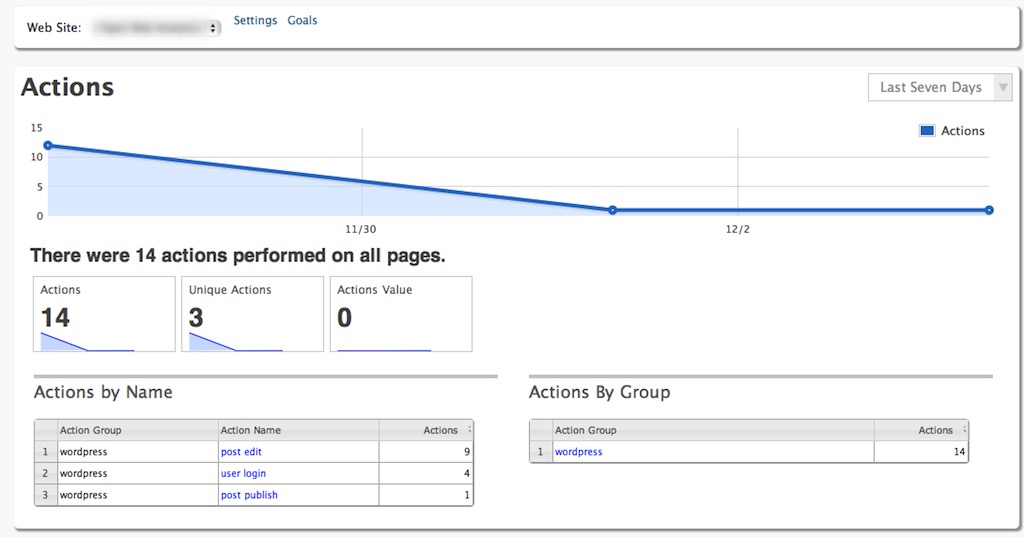
Source
Google Analytics, the holy grail of web analytics, a tool that’s almost become synonymous with the term “web analytics,” is the go-to analytics solution for most optimizers. Its dashboard is where answers to your most pressing “What?” “Where?” and “How?” optimization questions lie.
But don’t mistake its ease-of-use for basicness. This tool gives you both high-level reporting that helps you check the pulse of your business, and detailed analytics of each visitor (showing you your visitor’s full history with your website and their path with all the sessions and actions they performed until converting or abandoning your website). And all of this zooming in at the user level with full privacy compliance!
By using your business’s historical data and attributes such as visit duration, page views, click speed, device class, value and quantity of products or pages viewed among others, it can forecast the probability of a visitor converting. Not just that, it also lets you show relevant messaging (such as a targeted offer) and push a lead to conversion, all in real-time. Its state-of-the-art behavioral analytics (capturing 70+ metrics “based on millisecond-level data such as hovers, clicks, and pace”) gives you insight into your users’ intent. You can also zoom in on real customer journeys happening on your website that result in either conversions or abandonment.
This web analytics tool starts at /month with support for 100,000 page views.
Today we’ve rounded up some of the best web analytics tools for your conversion optimization tech stack.
Not just that, GoingUp! also offers heatmaps and clickmaps, so you can see how your traffic engages with your website.
Remember, it’s never about the web analytics tool you use…
Because it’s an open-source option, it doesn’t give you a “one-line script” to add to your header or footer to track your website traffic. Instead, you need to download its software and install (and configure) it on your server. This is an option to consider only if you have development resources.
Heap offers a free plan that supports 5,000 sessions per month. Its paid plans unlock all of its advanced features with support for more sessions.
So Decibel Insights can tell you if you’re losing leads on the trial form page, or if the complex password field is resulting in massive dropoffs.
A Decibel user puts it really well: “Decibel provides the ‘why is this happening?’ to follow the ‘what is happening?’”
Oh, and if you use it with your Google Analytics account, you can also unlock the keywords and phrases that drive your search traffic.
This popular “all-in-one” Google Analytics alternative offers multiple pricing options. The €29/month plan unlocks most of its nerdy stuff with support for 50,000 monthly page views.
Any good web analytics tool can generate lots of data for you. But it can generate good data points (that translate to actionable optimization insights) only if you configure it right.
[embedded content]
Matomo Analytics is advertised as the go-to Google Analytics alternative.






